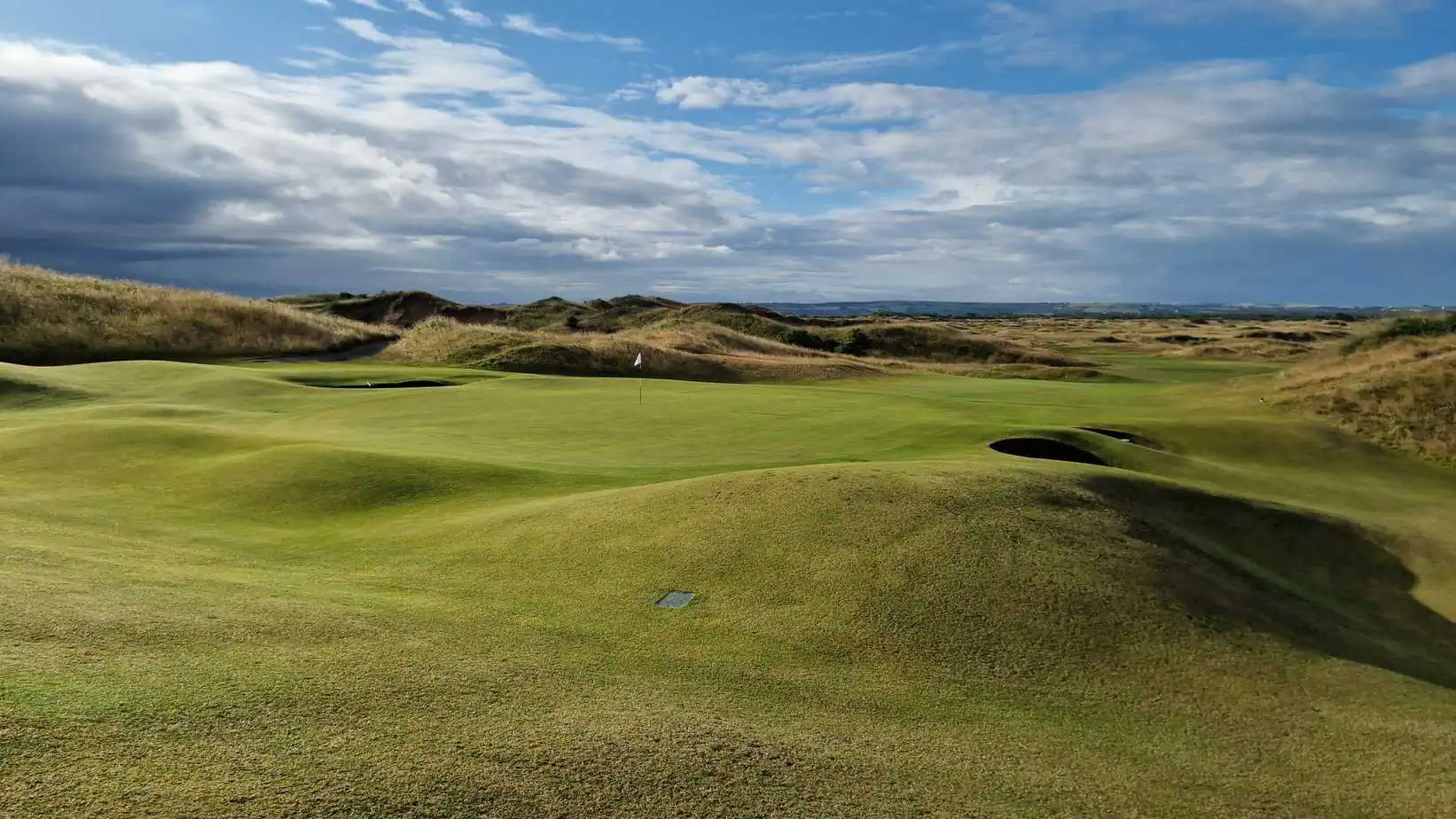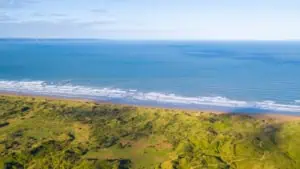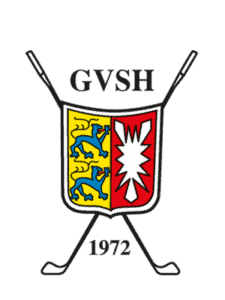Saunton Golf Club combines passion with strategy
‘We’ve always had a passion for this course’. Jon Sutherland, General Manager of Saunton Golf Club, says as he looks out of the large windows of the modern clubhouse over the 18th green of the East Course. From there, a landscape of dunes stretches as far as the eye can see. It’s a picture that will amaze any passionate golfer. Dune after dune winds its way across the course, with isolated fairways and greens popping up in between. It is wild, pristine and, as it turns out later, not only a visual but also a playing experience.
Saunton Golf Club, with its two 18-hole courses, is part of the Braunton Burrows, the largest sand dune system in England, which is five kilometres long and two kilometres wide. It is part of the UNESCO North Devon Biosphere Reserve, a Site of Special Specific Interest and a Wetland of Special International Importance under the Ramsar Convention. Parts of the dune landscape are also designated as a National Nature Reserve. The large number of protection status categories suggests that this is not the case: The management of this area, which has been looked after by Superintendent Murray Long and 16 greenkeepers since October 2020, is simple.
He is also passionate about it. The man, who looks out over excellently manicured fairways and greens during our visit, talks about challenges in every area. He has 200 m³ of water from two boreholes at his disposal every day. Not a lot in an area where the wind constantly blows across the fairways and the Cornish sun is quite intense. In the great drought and heatwave of 2022, Saunton was a brown dune landscape. Murray has long since sown the fairways with heat- and drought-resistant fescue grasses. There is no room for a large reservoir. You achieve an excellent standard of play, which is what he gets.
“We have a strategy”
At the same time, the dollar spot danger plays a prominent role here. The combination of high humidity and warm temperatures, coupled with the location on the coast, puts the area at extreme risk. Listening to the superintendent listing all the measures he takes to ward off the fungus, you can tell. Greenkeeping is also science, only those who have the expertise, evaluate the data correctly and draw the right conclusions will come to the right conclusion. “It’s actually all very simple things, but you have to do them in the right order,” Murray sums up with a smile. It seems as if this slogan applies to the entire club. “We have a strategy,” explains Jon Sutherland resolutely. “What we can do, we do to do our bit.” He means their part in the sustainable management of the club, which in the case of Saunton Golf Club covers many areas. The solar panels on the pro store point to this, as do the bamboo tees next to the sales counter. The machine park has been converted to hybrid devices, recycling is just as much an issue as saving paper.
In view of its prominent location in the Braunton Berrows, the club has developed a management plan together with two ecologists to maintain the site. In any case, the nature conservation authorities require the dunes to be cleared of bushes and buckthorn to be removed. The difference between the area managed by the golf club and that belonging to the state quickly becomes clear to visitors when they stand on one of the large dunes. Some of the dunes on the beach are heavily overgrown with sea buckthorn because the state authorities lack the manpower. On the golf course side, on the other hand, there is a dune landscape full of marram grass and other grasses typical of the region. It soon becomes clear that the golf course contributes significantly to the ecological management of the dune landscape.
Strategic plan for sustainability
All of this is only possible because the inauguration of a new Chairman in April 2020 marked the beginning of an era in which the topic of sustainability was systematically pursued by the entire club management: A strategic plan was drawn up for all areas of the club, members were kept informed on an ongoing basis, budgets were freed up and nature conservation associations and ecologists were included in the plans. The feedback from the membership has been overwhelmingly positive: when the biodiversity group was founded, 30 volunteers signed up straight away. It comes as no surprise that the Golf Club 2023 won the Going Green Award as part of the Sport & Recreation Alliance Community Awards.
Anyone observing the club over the course of a week will notice that the proportion and participation of women is surprisingly high by British standards. The promotion of children and young people plays an important role. The fact that the golf course has no shortage of green fee players due to its outstanding location and excellent golf courses also means that it has the financial means to train the children and young people themselves free of charge.
Historically grown and founded in 1897, the golf course has long since established itself as a central element of the region and the village of Saunton. This becomes apparent at the latest when the owner of the local Thai restaurant asks how the round went that day with a connoisseur’s expression when paying the bill in the evening and then talks off the cuff about all the advantages of the golf club. In this respect, the concept of sustainability is not limited to ecology here, even if the view of the impressive dune landscape might suggest that at first.
Saunton Golf Club sees itself as a driver of a sustainable concept in many respects. It also has an impressive tournament history, ranging from hosting the Brabazon Trophy to the English Amateur Championship and the British Boys Championship. In the end, visitors are left with an impressive conclusion when they sit on the terrace after a challenging round of golf and look out over the dune landscape. Fascinatingly beautiful. And first-class sustainability.









 Foto: Lee Collier
Foto: Lee Collier